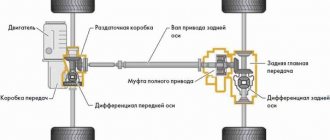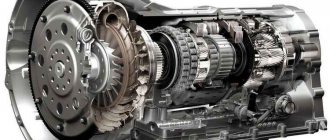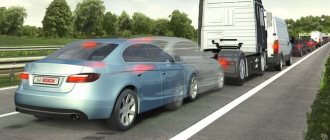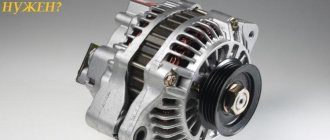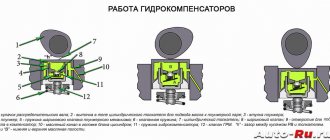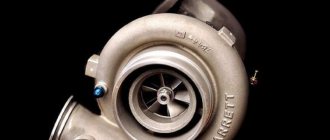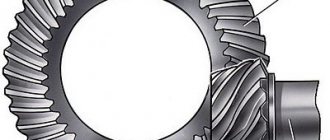Advantages and disadvantages of car drives.
Predominant disadvantages in front-wheel drive, rear-wheel drive or all-wheel drive vehicles.
Let's get acquainted with the features of existing: front-wheel drive, rear-wheel drive and all-wheel drive cars. Let's find out which of these drives is more preferable to car enthusiasts, which ones have advantages and disadvantages. Material content:
- Advantages and disadvantages of front-wheel drive cars.
- Advantages and disadvantages of rear-wheel drive cars.
- Advantages and disadvantages of all-wheel drive vehicles.
- Types of all-wheel drive systems.
Difference between all-wheel drive and single-wheel drive car
Motorists all over the planet are well aware that their cars have a mechanism called a drive. There are three main types: anterior, posterior and full. But what's the difference between them? Based on the understanding, the drive of the unit is a set of mechanisms and devices, the design of the transmission, which determines which wheels receive energy. The difference between all-wheel drive and single-wheel drive vehicles will be given below.
Advantages and disadvantages of front-wheel drive cars.
Specification of front-wheel drive, its advantages and disadvantages.
The design of the transmission determines which wheels the torque generated by the engine is transmitted to. This parameter specifies some important characteristics of the car. Therefore, before purchasing a vehicle, it is worth studying all the pros and cons of each layout.
Features of front-wheel drive vehicles:
In front-wheel drive cars, the torque generated by the engine is transmitted to the front wheels, thanks to which front-wheel drive cars have excellent directional stability. In mass production, this design began to be used only in the twenties of the last century, but despite this, front-wheel drive is a relatively simple design.
Front-wheel drive cars are cheaper to produce than rear-wheel drive cars. For this reason, more than 70% of automakers produce only front-wheel drive vehicles. In addition, this design contains fewer elements than other transmission designs and is more reliable.
Advantages of front-wheel drive cars:
The main advantages of front-wheel drive cars:
- High cross-country ability;
- Front-wheel drive models have higher directional stability and better cross-country ability than rear-wheel drive vehicles;
- Low temperature resistance;
- The front-wheel drive design does not have as many seals as the rear-wheel drive. Therefore, during cold weather, you can drive the car immediately after the engine has warmed up;
- Spacious interior;
- Front-wheel drive cars do not have a cardan niche, which increases the free space in the cabin and improves passenger comfort;
Disadvantages of front-wheel drive cars:
- The design of front-wheel drive vehicles ensures close contact between the engine and the body, so engine vibrations are easily transmitted to the body.
- Front-wheel drive cars have less free space under the hood; this space is taken up by the main drive systems.
- Some important front-wheel drive mechanisms cannot be repaired if they break down.
- If you start abruptly, the front wheels may slip.
To summarize about front-wheel drive cars:
Cars with front-wheel drive have excellent cross-country ability and directional stability; they are not afraid of cold weather and have an advantage on slippery surfaces. Front-wheel drive is reliable; in addition, the interior of front-wheel drive cars is a little more spacious and comfortable due to the lack of a cardan in the design of the car. But such cars also have disadvantages, for example, a fairly large amount of vibration from the engine or slipping of the front wheels.
What parameters are affected by different types of vehicle drives?
Which of all types of car drives is the best? As you begin your search for an answer, you should learn the basic terms.
Stability is an indicator that determines how well a car is able to maintain the required position on the road (does not tip over, there is no lateral sliding of the wheels) provided that the driver does not participate in the control: does not rotate the steering wheel, does not press on the gas/brake.
Steerability is the ability of a car to change its trajectory while under the influence of lateral forces: wind and the like in conditions when the steering wheel is stationary.
When you don't turn the steering wheel, but:
the turning radius becomes larger - this means that the car’s understeer is insufficient;
the turning radius becomes smaller - in this case the steering is too excessive;
the turning radius is not changed - then the steering is neutral.
A vehicle with low steering will be more stable on the road. The fact is that under the influence of lateral forces the car will move along a curve with the largest radius. At the same time, the centrifugal force will decrease, and the car will begin to move in the original direction.
Controllability is an indicator that determines whether the car can change its trajectory, taking into account your control. Controllability and stability are interdependent. For example, when a car goes into a skid, that is, four wheels slide sideways, it may stop responding to any of your actions.
The tendency to skid is higher on the drive wheels. That is, if you start to move away sharply, these are the wheels that will go into the axle box.
In order for skidding to be impossible, it is necessary that the adhesion force between the wheel and asphalt becomes greater than all the forces acting on it. The drive wheels are subject to traction and braking force. This means that if a lateral impact occurs, it is these wheels (and not the driven ones) that will lose traction with the road surface. But, if your car is front-wheel drive, and you are driving it alone (the car is empty), then the rear axle will skid. This is explained by the fact that it weighs less than the front one, so the grip on the road will be worse.
Advantages and disadvantages of rear-wheel drive cars.
Features of the advantages and disadvantages of rear-wheel drive.
When choosing a specific car brand, a savvy buyer first pays close attention to all its characteristics, capabilities, features and much more. However, the main task for most modern buyers is the choice of drive.
Features of rear-wheel drive vehicles:
In a rear-wheel drive car, the driving axle is the rear axle, or in motorist jargon, the rear axle. Which receives torque from the engine through the driveshaft mechanism.
What is a cardan shaft? »
Choose and buy
Currently, it is more difficult to cross a field than to buy a car. Automotive markets appear so quickly that you don’t have time to record their locations. All of them are full of cars of all brands from various domestic and foreign manufacturers.
Choosing a used normal car from a huge number is a problem for many. They do not know well enough how to choose used cars and what to do in this situation.
Range Rover
We assume that this material will fully become a good adviser for those who decide to purchase a motor vehicle in a showroom, on the automobile market, or simply from a neighbor. We hope that the essence is captured. Using the advice in this article, you can buy a used car of the required quality, comfort, spaciousness and dynamism. The car is reliable and easy to use. And this is the main point.
What is a cardan shaft?
A driveshaft is a structural element of a car that transmits rotational motion from the engine by removing force from the secondary (output) shaft of the gearbox (gearbox).
The classic driveshaft is still used on trucks and all-wheel drive vehicles. In the case of completely rear-wheel drive, it connects the output shaft of the gearbox (it makes no difference whether manual or automatic) with the drive of the rear wheels. The driveshaft is connected to the gearbox output shaft through an elastic coupling using 6 bolts. This connection is attached to the body by a so-called suspension bearing, which, like any heavily loaded part, regularly fails and knocks under the driver’s feet. This characteristic knock is known to all owners of rear-wheel drive cars. But if the owner of a front-wheel drive car tells you that his suspension bearing is failing, you can safely ignore him. Since front-wheel drive cars have a different system for transmitting torque to the wheels, and front-wheel drive suspension bearings simply do not exist. If you ask a person who has a superficial understanding of cars: how many rotational gears are there in the car’s design, he will say 4 or 5 and reverse, depending on the gearbox. And only a serious motorist will say that there is one more gear. Which is called the main one and transmits rotational motion directly to the wheels. At the end of the driveshaft (I'm talking about the classic design of a car with a rear axle) there is a gear that rotates a large one - the so-called planetary gear. Through a set of satellite gears - called a differential - it distributes the rotational force between the rear axle shafts. The design of the differential is quite simple, but it is difficult to explain in words without providing diagrams. The meaning of the differential is to ensure that the torque of the main gear is correctly distributed between the wheels. If the car is driving straight, the ratio will be 50/50. If the car is driving around a sharp turn, then the outer wheel is forced to rotate faster than the inner one. The differential transmits most of the torque to the outer wheel and less to the inner wheel. If a rear-wheel drive car did not have a differential, the tires on the inner wheels would burn when cornering. The driveshaft is made incredibly massive so that the transmission of rotation to the rear wheels is uniform. In addition, it is carefully balanced to avoid runout. The design of this seemingly simple part - a basic transmission shaft - is quite complex.
Being heavy and seemingly monolithic, the driveshaft can change length, since it consists of two parts along the length, articulated by a splined joint. If the car were driving only on a straight horizontal road, its body would not change its position relative to the road surface, and the distance between the elastic the clutch in the gear driving the planetary gear would remain constant. But the roads are not mirrored. And even at the slightest irregularities, the body changes its position relative to the wheels. And at the same time the distance from the elastic coupling to the rear axle changes. Thanks to the spline connection, the driveshaft constantly moves and moves apart. Ensuring the operation of the transmission - this can be explained very superficially using the example of a ballpoint pen retracting and retracting. This system, with minor variations, is used on rear-wheel drive passenger cars or all-wheel drive, and on heavy trucks.
This type of drive is considered classic, since it was the first to enter mass production.
Advantages:
- The load on both axles of the car is distributed equally, since when driving, part of the weight falls behind the rear axle, which significantly lightens the front part, where the already heavy engine is located. Thanks to this, the car accelerates faster, but if the throttle is applied too much, the rear wheels may slip.
- It is quite easy to climb hills and take turns in a rear-wheel drive car, but there is a peculiarity: if you operate the gas pedal incorrectly, the rear-wheel drive car will skid much more strongly. The turning angle of such cars is quite small, since only the rear axle pushes.
Flaws:
- The presence of driveshafts to some extent reduces the power as well as the dynamics of the car.
- Rear-wheel drive cars have a complex design, since this type of drive requires additional components and assemblies. Because of such components and assemblies, the weight of the car increases quite seriously.
- Moreover, rear-wheel drive can significantly increase the cost of the car, as well as possible repair work.
- There is a little less space in the cabin, again due to the presence of a driveshaft.
- Driving a car in icy conditions is extremely difficult. In winter, accidents on slippery roads often occur. Cars on summer or all-season tires often get into accidents. .
- Rear-wheel drive cars have rather specific controls that take some getting used to. Driving in deep snow or mud is extremely difficult due to the large weight of the vehicle.
To summarize about rear-wheel drive cars:
This material examined the main distinctive features of rear-wheel drive cars. I would like to believe that this information can help buyers decide on the choice of a specific car.
Advantages and disadvantages of all-wheel drive vehicles.
Discussions about the advantages and disadvantages of four-wheel drive vehicles.
Today, every second person has personal transport: a car, a scooter, a motorcycle. More and more people are switching from their two wheels to wheels. Some people buy a used car, while others prefer a new one.
The question arises: which drive to choose? Rear, front or full? There are many reviews and opinions about all drives, true and not so true, good and not. Any driver can characterize all drives differently.
Advantages:
- All-wheel drive vehicles operate in AWD and 4WD modes. One of them is all-wheel drive and operates in automatic mode. The other is also all-wheel drive and turns on and off manually.
- An all-wheel drive car operates in two ways. The first is responsible for the operation of the rear axle (so the car goes faster), the second sends energy to two axles (so there is maximum traction with the road surface).
- All new all-wheel drive designs include three differentials to help distribute power equally to the wheels in a comfortable, risk-free environment.
Flaws:
- Although an all-wheel drive car includes all the advantages of other drives, driving it is more difficult than it seems, especially in bad weather conditions.
- In different situations, such a car will ask to either increase or decrease the gas, depending on the clutch, speed, etc. It is impossible to foresee scenarios in extreme conditions, because the all-wheel drive system may become uncontrollable without serious reasons.
- Another disadvantage of such a drive is a large waste of fuel. This depends on the design of the drive. Maintenance and repair of an all-wheel drive vehicle costs large sums, especially if the vehicle itself is an expensive brand. Such a drive system has more spare parts that need to be repaired and replaced.
When the driver is new
They say that every driver remembers the day when he first got behind the wheel of a car and the first emergency situation he created on the road. In principle, this is never forgotten. After gaining driving experience and becoming a pro in this business, he laughs in his heart at his first ridiculous mistakes.
Based on my own experience, I am ready to give advice on which car to choose for a novice driver. This advice is worth heeding. I will convince you to buy an inexpensive, used car, but at the same time treat the process of choosing your first car as carefully and responsibly as possible. After all, our safety directly depends on the technical condition of the car, especially a novice driver.
There's a first time for everything
It is difficult to find a person in the world who received a license and in the first year of driving did not hit his car against a fence post, did not scrape the sides of the car while parking, or scratch the bumper when putting the vehicle in the garage. In a word, if you bought a car, then prepare money, a lot of money.
Scratched bumper
However, despite your driving experience and the cost of the car, you should always try to drive as carefully and carefully as possible, since habits and driving habits remain the same. Interestingly, the car never forgives mistakes. And their correction, that is, high-quality repairs, is the key to your safety, as well as other road users.
But not everything is as complicated as it seems. A novice motorist can also be advised differently. Before you spend money on an inexpensive car, you can simply test it at a car service center.
The fee for the service is not that high, and the benefits of monitoring a vehicle by specialists are much greater than these costs. The car service will inspect:
- technical condition of the engine and its components;
- transmissions and drives;
- pendants;
- check your computer for errors;
- They will inspect the condition of the body for mechanical damage, including repairs, etc.
They don't skimp on safety
Road accident statistics show that it is inexperienced drivers who commit accidents, sometimes leading to tragic consequences. This statistic is further aggravated by the technical condition of the cars they drive. This is not always a new or fully functional car.
By using the services of a car service, you can make sure that the car you are buying is technically in good working order. In addition, the service center employees will tell you what to buy and what to change. Their practical advice is always in demand.
Types of all-wheel drive systems:
If you own a car that has all-wheel drive, or are a fan of it, or just want to buy such a car, then this material will tell you about some all-wheel drive systems, their existing disadvantages and advantages.
Part-time 4WD – all-wheel drive system:
The peculiarity of this drive system is that the car, moving along the highway on hard surfaces, has only drive on the rear axle. That is, the front axle of the car is disabled and you are driving a huge rear-wheel drive car in a station wagon, and not an SUV.
Once you start driving off-road, the front axle also comes into play. Such cars perform very well when overcoming obstacles, they have good maneuverability.
The advantages of SUVs with a part-time 4wd drive system include a low price. There are also disadvantages. If you very rarely go off-road, then such a car will be of no use, since it will always be used with only rear axle drive.
On demand part-time 4wd – all-wheel drive system.
This system is almost no different from the previous one. The car also moves with permanent drive on the rear axle (sometimes the front axle is the drive one). If the drive wheels start to slip, the electronics start the second axle. If the car has already skidded, then even the second axle will no longer help to level the car on the road, therefore, this system has serious drawbacks.
Conclusions for each of the listed systems:
- The first system is very good if you drive mainly in urban conditions and not on the highway.
- The second version of all-wheel drive systems will drive well in the snow.
Now that you know some types of all-wheel drive systems, you can choose the best option for you.
To summarize about all-wheel drive vehicles:
An undeniable advantage of an all-wheel drive vehicle is its high cross-country ability in off-road conditions and bad weather conditions. Only an experienced driver can experience all the advantages and disadvantages of such a drive; an inexperienced beginner may not be able to control the car and get into an accident. If you still want an all-wheel drive car, study the theory well, take a test drive in such a car, evaluate yourself behind the wheel. It doesn’t matter what kind of drive the car has, the professional skills of the driver, his ability to navigate stressful situations and composure are important.
"Do you remember how it all began?.."
At the beginning of the last century, designers tried to use a drive on both axles not only on SUVs, but also on simple passenger cars. The leading position in this area was then taken by the British company Jensen. It was their brainchild, called Jensen FF, that became the first production passenger car equipped with permanent all-wheel drive and ABS.
All-wheel drive Audi Quattro also made their contribution, performing equally well in road racing and rally dirt. And the Porshe 911 Carrera 4 and the magnificent Porshe 959 won most of the titles on the asphalt. All this said that four-wheel drive is good everywhere and in everything.
The explosion in popularity of all-wheel drive in rally cars in the 1980s has a simple explanation. With its help, it was possible to make the most efficient use of engine power on slippery surfaces - soil, gravel or snow. Single-wheel drive cars could not realize their full potential, and as a result, their speed in difficult areas fell.
On good, smooth asphalt, the problem of mono-drives could be partly solved by increasing the width and diameter of the rubber. They also resorted to changing the weight distribution in favor of the drive wheels. But all this was ineffective, since there are too few straight and comfortable sections in the race.
That's why the finest hour of all-wheel drive came. After all, four drive wheels cling to the surface much better than two. This means that the dynamics of such a car are better. The problem of increasing the weight of the car was solved with the help of multi-valve engines and turbocharging, so there were no losses in power supply.
Already in the 80s, an in-line “four” or “five” could produce several hundred “horses” if necessary. And, interestingly, the power units had quite a decent margin of safety - by racing standards, of course.
The use of all-wheel drive in racing gave rise to a whole galaxy of cars that became legendary over time. There are Mitsubishi EVO, Subaru WRX, and Ford Cosworth. Even the Opel Vectra 4×4 managed to “inherit” in history - it was designed with the DTM championship in mind.
